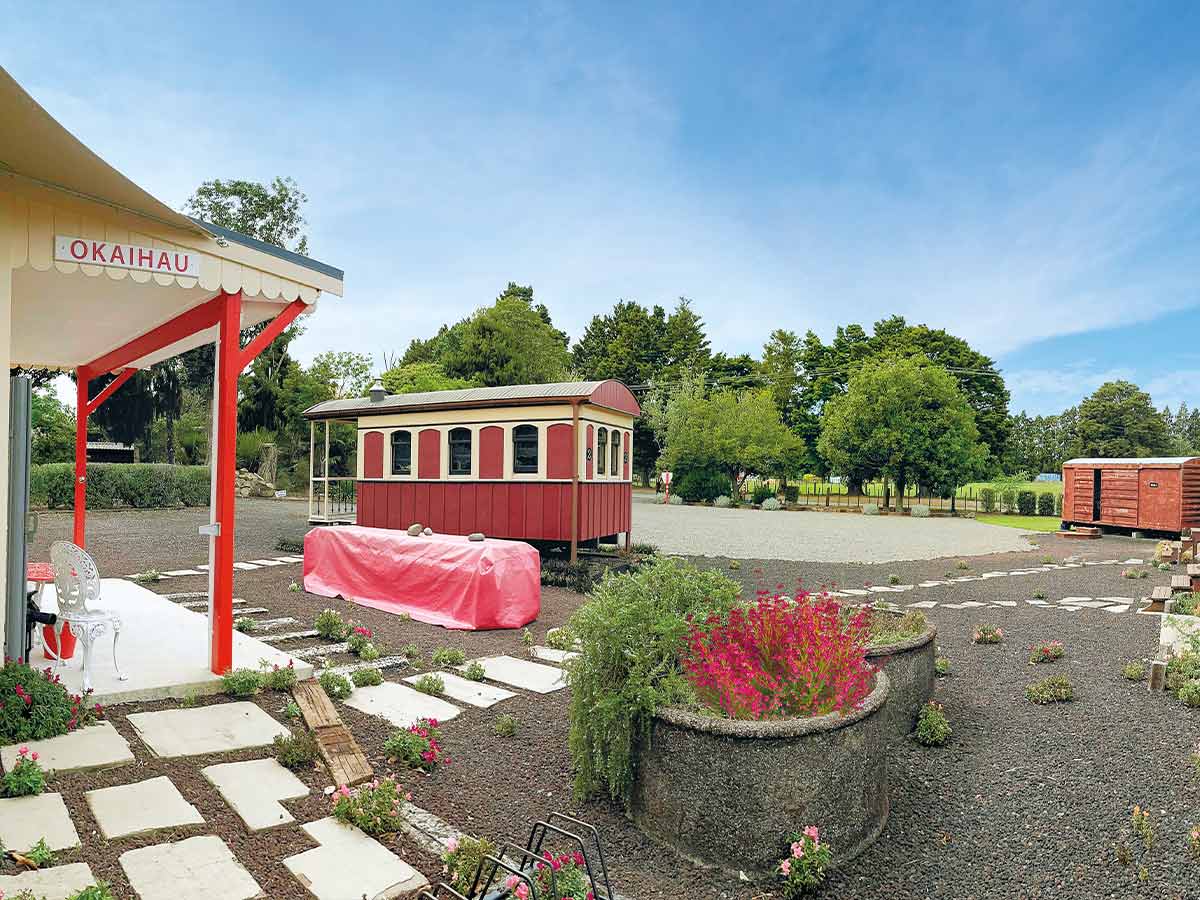Travelling by motorhome and caravan offers the opportunity to stop and explore unobtrusive settlements along the way. Jill Malcolm discovers that while some may seem, at first, to have little to offer other than a quick refuel, it’s more often than not that a bit of digging reveals unexpected treasures.
Such is the case with Ōkaihau. Located on SH1 in the Far North, it’s easy to whizz past the turn-off to the small village. In fact, blink and it’s gone, but observed with eyes wide open, an interesting story unfolds.
Six years ago, we had overnighted in the freedom camp at Two Ponga Park on the edge of the river. I was curious to see how the village had fared after COVID and the closing of SH1 just further north at Mangamuka due to severe damage in 2022 storms. Both events would have had a severe impact on the little settlement.
A community with heart
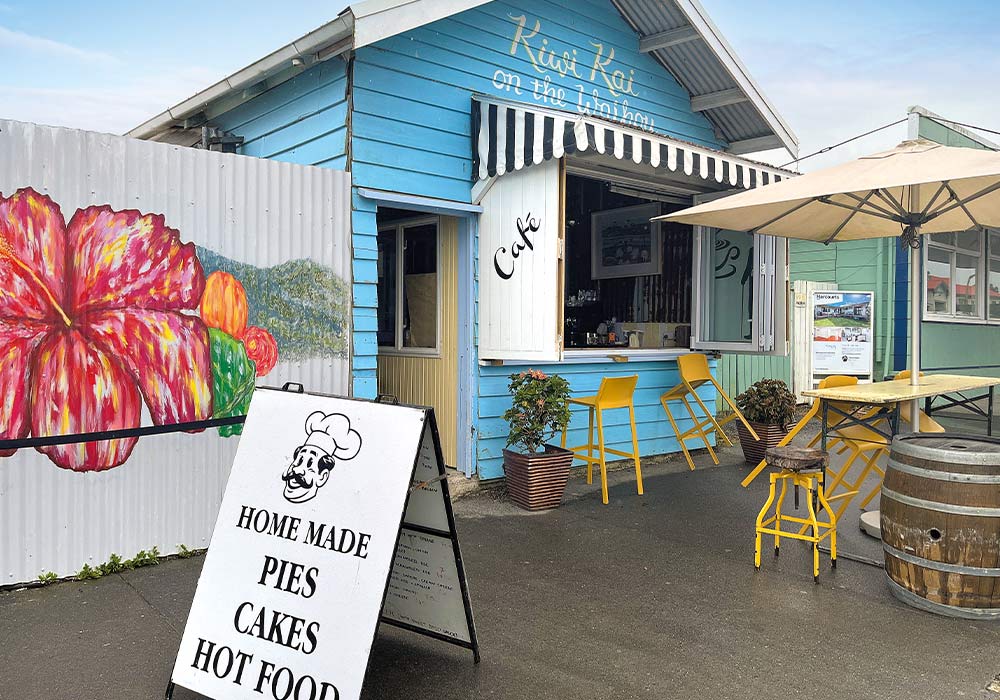
Around 800 people live in Ōkaihau and although there have been challenges, I was pleased to find that the friendly, optimistic attitude we’d first encountered remained.
“We have a wonderfully cohesive community,” says Murray Smith who owns the quirky Kiwi Kai Café. “Pulling together will get us through.”
Murray grew up here, cosseted within his local tribe and attending the local school. He left as a young man to work and live in many other parts of the world but a few years ago returned and set up the hole-in-the-wall café, which has a reputation for its interesting offerings.
We’d pulled up in the motorhome and parked in Settlers Way, the main street, to treat ourselves to breakfast. Bill had a chicken burger, which he pronounced delicious, and I chose mussel fritters. The coffee was remarkably good.
A little further down the main drag is the other café called Sapphire announced by murals and a glaringly blue exterior. Alongside truly authentic homemade sweet and savoury pies (the key lime pie is a must-sample alongside an astonishingly good apple pie), it also serves toasties, burgers, and paninis. Two well-breakfasted cyclists emerged from the café and peddled down the road, battling hard against the blustery breeze.
The town is situated on the highest point of the 86km Twin Coast Cycleway from Opua to Horeke. Ōkaihau means “feast of the winds” in Māori and that day it was true to the name.
On the rails
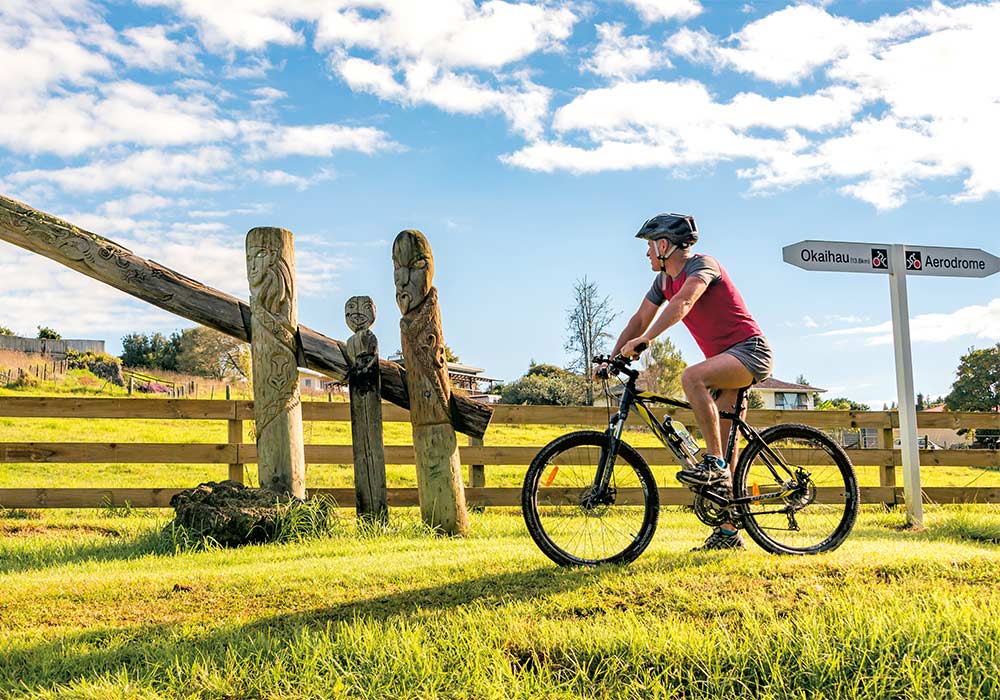
It’s also an old railway town. In the mid-1930s, the Ōkaihau Branch Line was to have continued all the way north from there to Kaitāia, creating a nationwide rail network from one end of New Zealand to the other. Debate raged over the best route north beyond Ōkaihau, and it was decided to forge the line through the Waihou Valley. It didn’t work. The terrain is precipitous and slip-prone, and the steam ran out of the project at Rangiahua on the eastern reaches of Hokianga Harbour. Ōkaihau became the northernmost railhead in the country until the line was closed in 1983.
Opposite Two Ponga Park is a short, wide-mouthed, concrete tunnel, the only remnant of those hay days when this quiet little town bristled with activity. But the old railway corridor also forms part of the cycle trail and bikers have brought energy and interest back to the town.
There’s another reference to the railway history at Ōkaihau Railstay just out of town, which is an RV Park and a collection of railway carriages repurposed as intriguing accommodation. This delightful place was created by long-term residents, Noeline and Peter Inverarity. In 2008, they’d set up a livestock transport company and a few years later had the idea of catering for people who were also transporting themselves through the town but by bike, car, or RV. Noeline bought a railway carriage and three goods wagons. They were rough and rusted but lined with native timber and structurally robust.
“Restoring them was a way bigger task than I envisaged,” she admits.
The result, however, is delightfully retro with intriguing details and memorabilia from the old railways days. The kitchen is a ‘railway station’ modelled on, but not to scale, from photographs of the old Ōkaihau Station.
Country fare
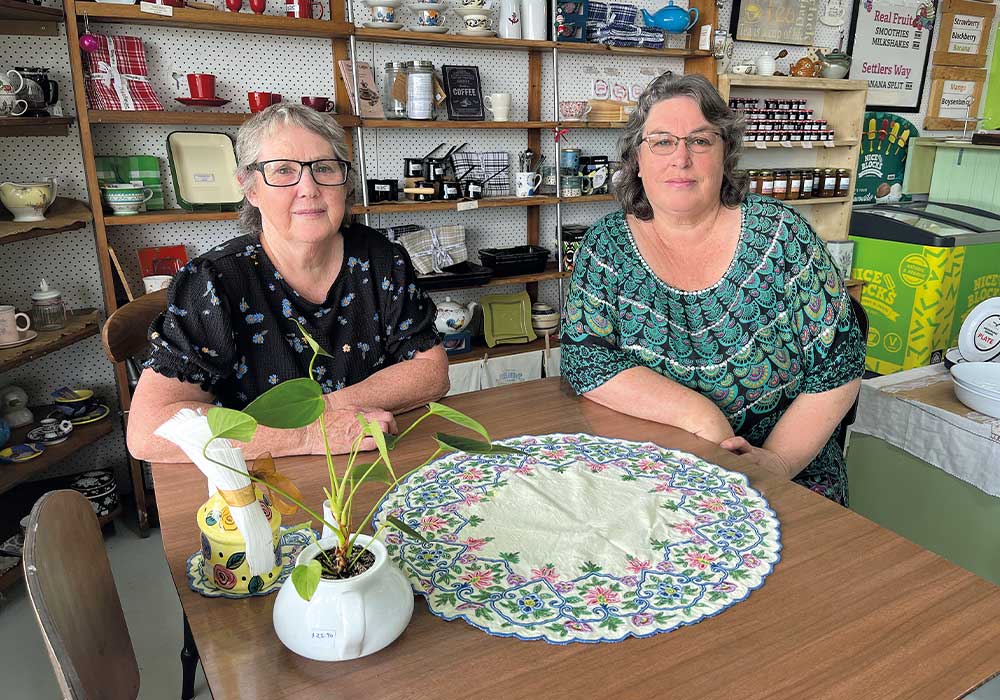
Back in the centre of the village is the fascinating Settlers Way Country Store run by locals Jackie Poole and Annie Blackmore.
“Oh, we get a lot of RVers like you through here,” says Annie.
The last time I was here, she was selling real fruit ice cream and smoothies across the road and Jackie’s Country Store was in the old TAB. When the hardware store next door became vacant, the women combined their businesses and expanded.
I wandered through the collections, admiring the array of enamelware, vintage goods, native plants, traditional New Zealand sweets, hand-made toys, books, preserves (made by Jackie), and vegetables.
“Bet you don’t leave empty-handed,” said Bill, and he was right. My credit card jumped right out of my pocket. I left with a locally embroidered tea towel, a bag of freshly picked mushrooms, and a packet of humbugs.
Next door is the Ōkaihau Butchery, which is remarkable in that it has been operating on this site for the last 90 years. Today it’s owned by Fran and Clint Clayden. “Come in for a laugh if you don’t want a sausage,” says Clint who’s better known as ‘Chops’.
The couple came to Ōkaihau from Matakana eight years ago and fell in love with the place. They also run a local home kill service (which I prefer not to think about), and Chops makes his own bacon and 12 different types of sausage. I can vouch for the pork and watercress and the beef and blue cheese.
Also in the main street is a sizeable memorial hall, which lends character to the town and is still used for meetings, funerals, and dances.
The largest complex, however, is Ōkaihau College, which provides secondary education for country children scattered around the area. The first school was opened here in 1865 when one teacher taught 21 children in a log cabin built by the community. Today, there’s a primary school and a college, which has a student roll of 340.
Staying over
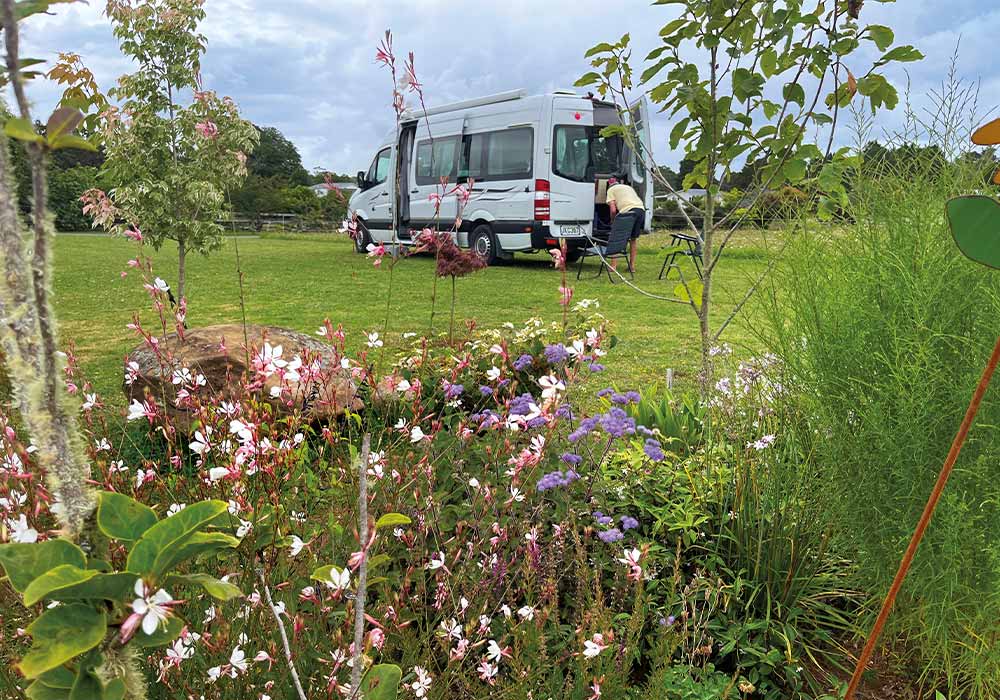
We roosted for the night at Pigeons Rest, a POP farm just out of town. On our way there, we stopped for a look at St Catherine’s Church (1875), which had been serving the faithful for more than
50 years before the trains came to town.
This charming little House of God was built of pit-sawn timber in a Gothic style. The graveyard sports the headstones of up to four generations of local families and a memorial to 12 British soldiers who were killed near Ōkaihau in the first battle of the Northern Wars in 1845. Unable to beat Hōne Heke’s warriors, the British retreated. Heke buried the fallen from both sides. Later, the British soldiers’ bodies were interred in the church’s cemetery.
At Pigeons Rest, we were greeted by owners Joan Loveridge and Terry Sullivan. In the driveway was an Okanagan caravan, which Terry explained wasn’t going anywhere.
“A few years ago, we were on a road trip in her and in the Waioeka Gorge, the chassis suddenly collapsed. That put paid to our travels. We discovered that the chassis had been broken when we bought the van but had been cleverly disguised by some skilful welding.”
They built a house on the farm and the Okanagan has been turned into a B&B. Terry and Joan’s welcome was fulsome.
“Help yourself to plums from those trees over there,” said Joan. “We’re having dinner with our neighbours, and I’ll also bring you the beans and courgettes I picked this morning because I won’t be using them.”
We felt like we were staying with old friends.
It’s the sociable, easy-going attitude of the people that as much as anything, makes Ōkaihau one of our favourite tiny towns in the Far North.
Things to do
Drive: Drive towards Horeke on the Kaipara Harbour down the exhilarating switchback road that descends into the Utakura Valley with gorgeous views over pastoral hills and pockets of native forest.
Cycle: The Twin Coast Cycle Trail can be accessed from Ōkaihau, and many of the Cycle Trail shuttles use the town as the pick-up and drop-off point. The trail passes through some of New Zealand’s earliest European and Māori settlements. The section from Ōkaihau to Horeke is a beautiful bike ride or a walk with storyboards, panoramic views, and a 1200-metre-long boardwalk through mangroves.
Walk: Within the 15,000 hectares of Puketi and Omahuta Forests are magnificent stands of kauri, podocarp, and hardwood trees. Continue down Waiare Road from the golf course to the Manginangina Kauri Walk through a wonderful forest of mature kauri trees. It’s a short route and boarded all the way but peaceful and full of botanical interest.
Golf: The Ōkaihau Golf Club is nine holes of rolling country golf at 660 Waiare Road, Ōkaihau. The small course has been around since 1928. Its mown fairways are flanked by mature native and exotic trees and are crossed by a winding creek. The course is short but demanding and presents an interesting challenge for golfers at all handicap levels.

